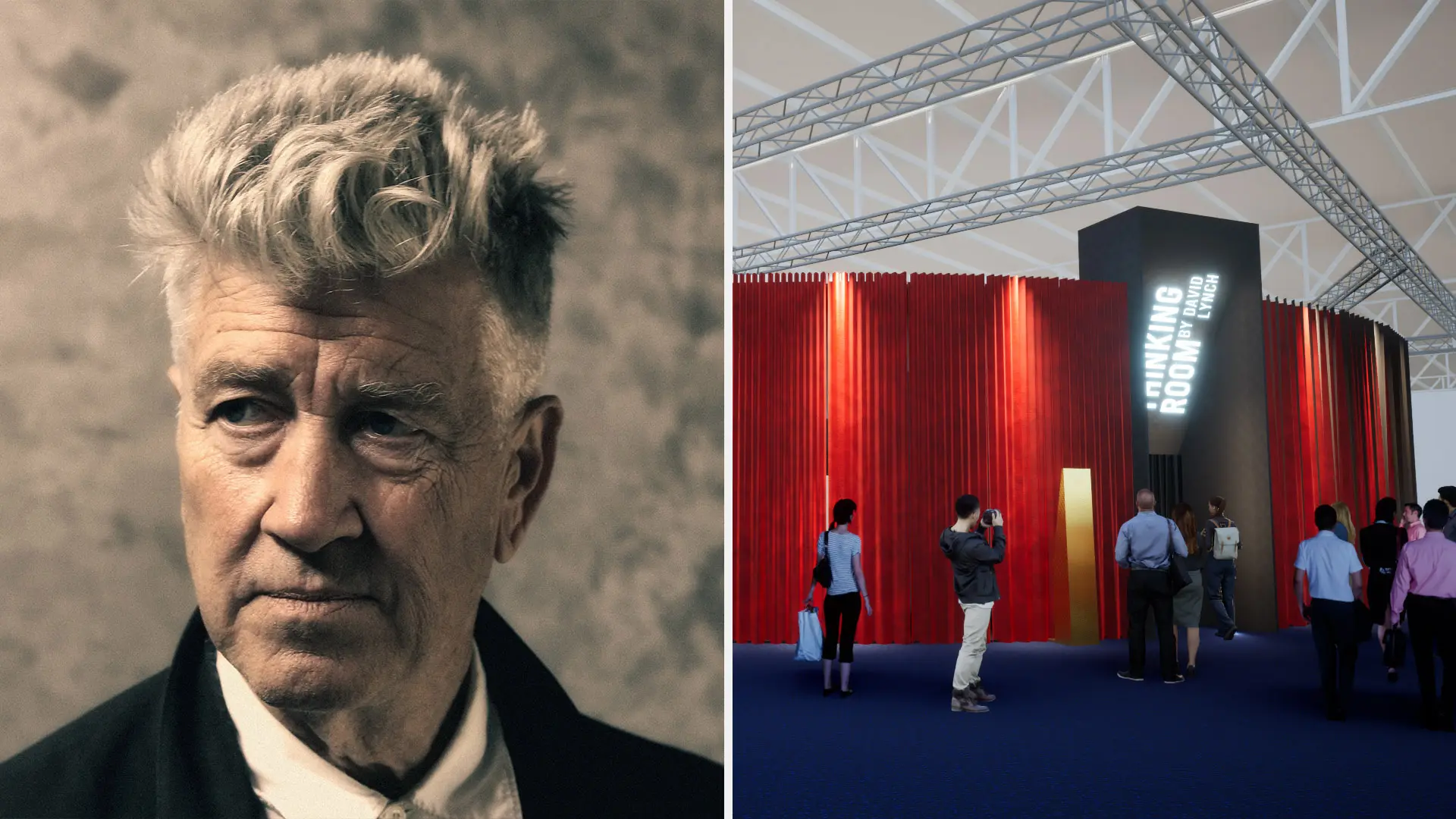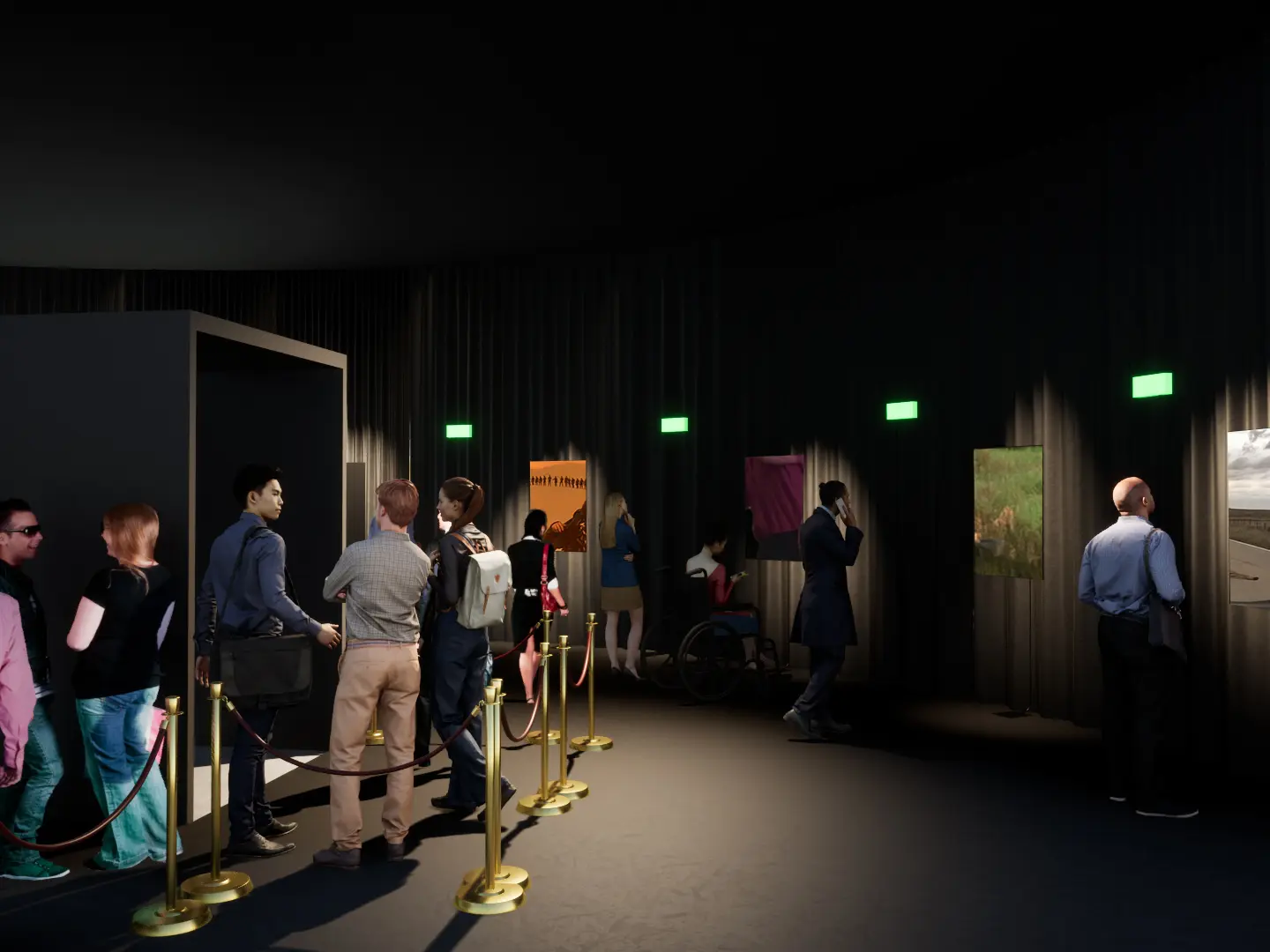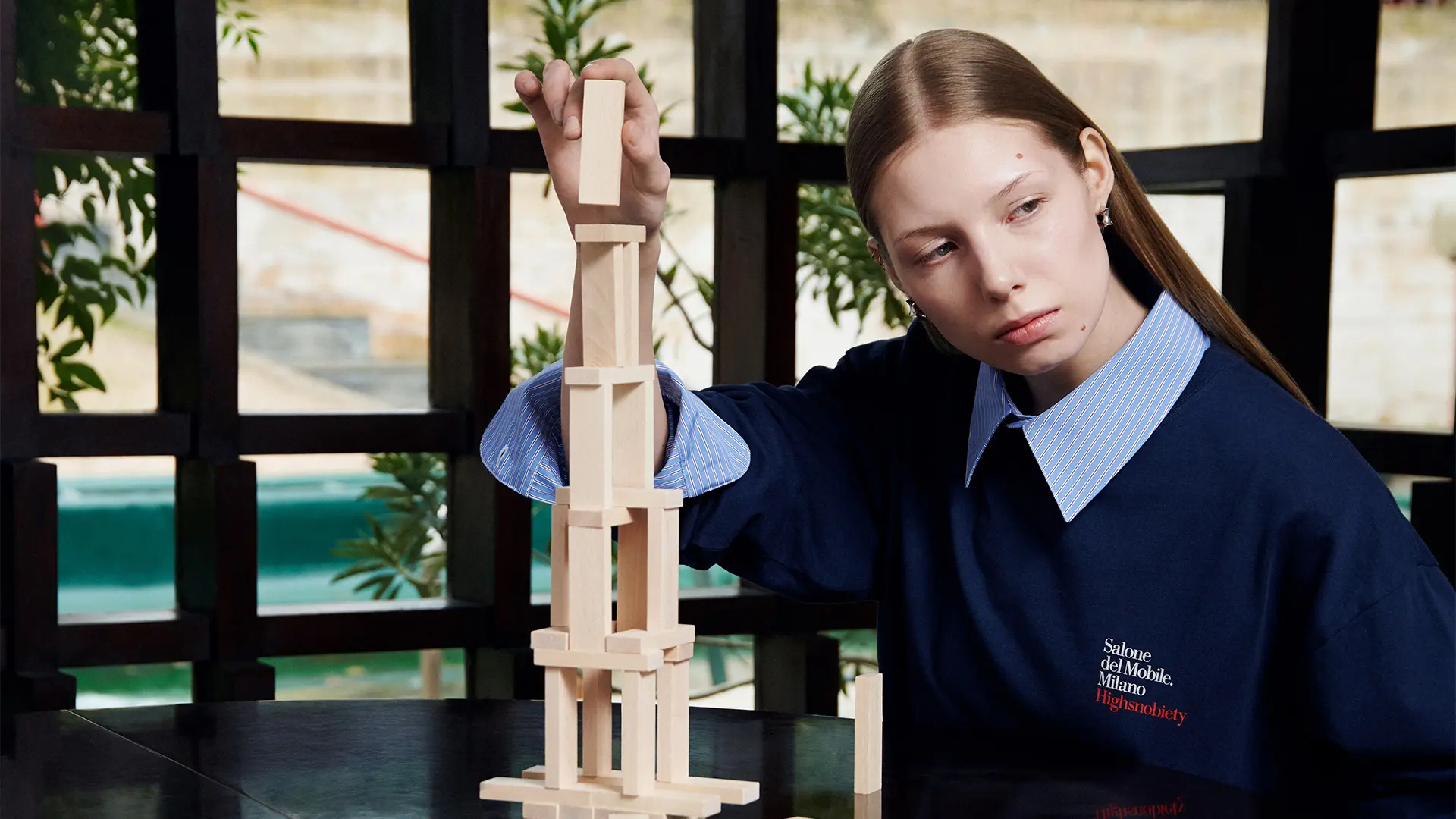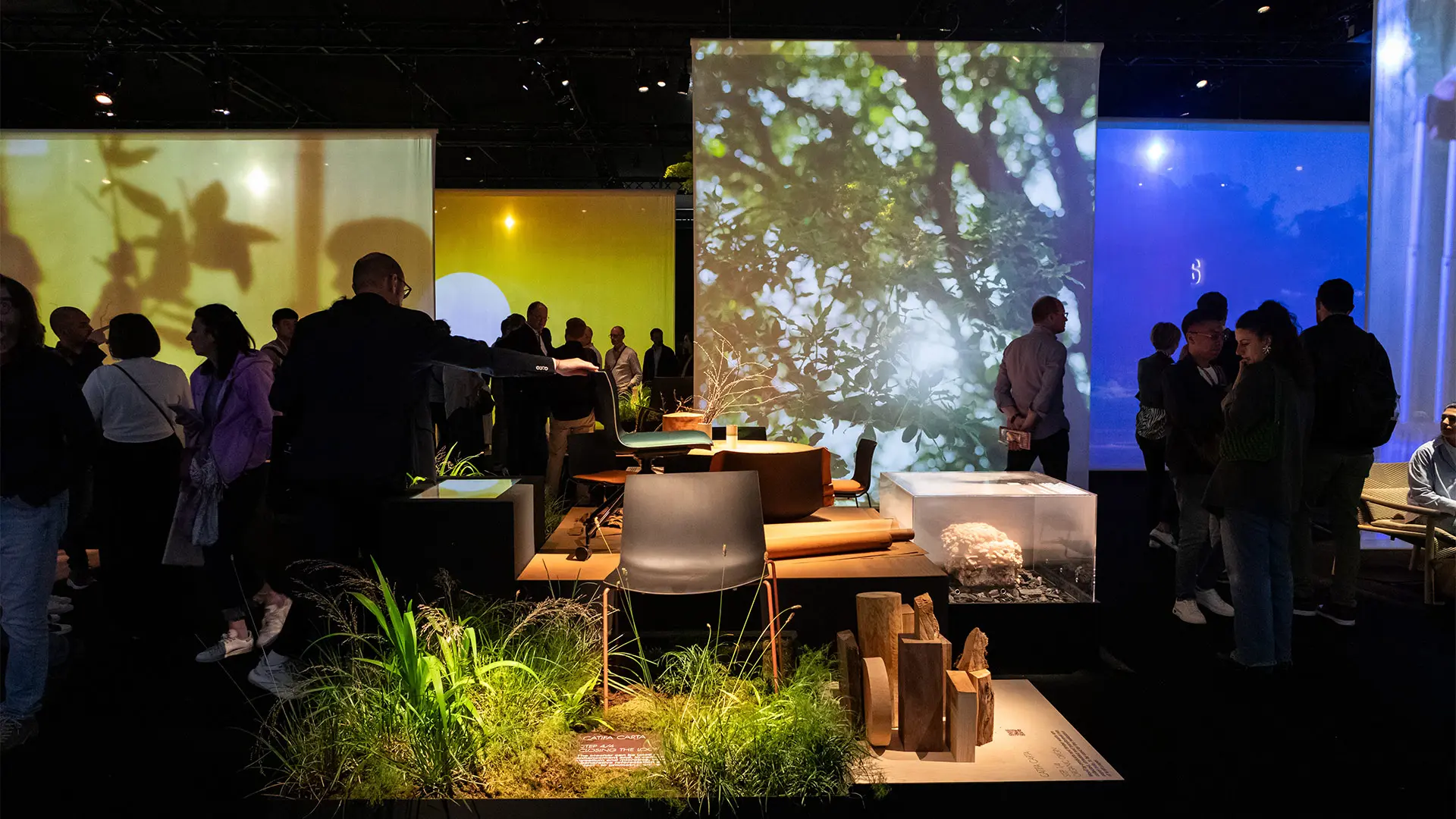David Lynch’s dreamlike rooms at the Salone del Mobile.Milano 2024

"Interiors by David Lynch. A Thinking Room" - Lombardini22
We interviewed Antonio Monda, curator of the installation "Interiors by David Lynch. A Thinking Room": one of the most keenly awaited events at the edition slated for 16th to 21st April
"Interiors by David Lynch. A Thinking Room" is the title of the installation designed by the renowned filmmaker of the subconscious David Lynch for the April edition of the Salone del Mobile.Milano. Inside Pavilions 5 and 7, two identical mirrored “thinking rooms” have been conceived as symbolic doors to be entered in order to become immersed in the exhibition.
Lombardini22, a leading group on the Italian architecture and engineering scene, designed the masterplan for the positioning and the architectural footprint of the curved perimeter leading to David Lynch’s work. The Interiors by David Lynch. A Thinking Room project also saw the collaboration of the Piccolo Teatro di Milano - Teatro d'Europa, which oversaw the executive design and staging. In addition, Alessandro Saletta e Melania Dalle Grave, DSL Studio’s signature shots document the process of creating the Thinking Rooms. Technical sponsor: Targetti.
We contacted the curator, Antonio Monda, for a heads-up on all the details and a glimpse behind the scenes.

Antonio Monda - Ph. Brigitte Lacombe
There will be two rooms, entitled Thinking Rooms. Twin rooms in which to think, not necessarily for meditation, but perfectly suitable for it. I have built a pathway leading up to them made up of around a dozen 56 inch screens, onto which sequences from his films will be projected, which show how he uses scenery and furniture. As I said, they are twin rooms and therefore identical. They’re wrapped in a sort of blue velvet curtain reminiscent of his famous film. In the middle, there’s a chair – just calling it a chair doesn’t really do it justice, because it’s a huge wooden armchair above which there are brass tubes.
It will be a surprise.
I was contacted by the Salone del Mobile.Milano. They asked if I knew a filmmaker who might be interested in designing a room for them. I remembered going to see Lynch about his lifetime award when I was running the Film Festival, and I found him in his workshop, planing a piece of furniture. I was really intrigued. I found out that this is something he does, which is much more than just a hobby, it’s something he believes in, that he likes a lot. I phoned him, and he was very interested, passionate. He did some drawings that became more and more precise. Right now we’ve got some renders and two months’ construction work to go, but that’s how it started. Obviously, it all took place with a series of lengthy Zoom meetings with the Piccolo Teatro, which will take care of the construction and the realisation.
He said: “come on, I’ll show you what I’m doing” and I thought he was going to show me a film, a scene, you know. Instead, there he was, planing.

David Lynch - Ph. Dean Hurley
It’s something he really believes in because it’s part of his expressive design, of what he’s looking for. I’ve tried to set this out in my piece for La Repubblica, which is an extract from a longer essay that will come out for the Salone. Scenery, and therefore furniture too, take on a life with Lynch – they’re not just a background or an object. They have their own personality.
Absolutely. It’s a fundamental part of how he expresses himself. Just as we often don’t have to try and find a good rational answer to what we see, because he is following the flow of emotions, he follows the poetic flow of what he intuits about people and things. Within this process the inanimate is just as important as the animate. Then there’s his meticulousness: I’ve seen him planing, filing, measuring. That was in Los Angeles. He’s entrusted the installation entirely to the brilliant set designers and builders, the makers at the Piccolo Teatro.
No, he has just designed it. They are very fine designs, highly imaginative. I’m trying to get hold of them to put them into this path leading to the rooms.
The term “not processed” seems right to me. That is, they are intuitions. He is an artist, a poet: he doesn’t work in prose but in verses, he intuits things in the same way as poets, true artists do, much more deeply than we elaborate or process them. In fact, if you ask him a question such as “what does that thing mean?” he gets almost testy. “I don’t know about that thing.” It would be difficult, well-nigh impossible for me to explain why that particular wood, why those brass tubes. But then you realise that it is something that could well be and indeed that it’s a strange image that could belong in one of his films.
It’s a place in which the visitor, the viewer enters into a dimension that is completely his own, completely other. That is, you go into another place. It’s like going into Lost Highway. There’s a point at which the protagonist, Bill Pullman, goes into an impossible, absurd, absolute darkness. Here, you enter a place like that. But the darkness is not so total.

"Interiors by David Lynch. A Thinking Room," interior view - Lombardini22
I can’t answer that. I know that Lynch designed it, he wanted to design it regardless. Not because he wasn’t interested or because he’s a snob. He did it as something that was completely his own thing in its own right. But you will see that each of the other rooms, each of the other installations, each of the other proposals will absolutely dialogue with this place. It’s a place in which one can gather one’s thoughts, in the same way as thinking and meditation are a dialogue with all the human elements and experiences.
Yes, absolutely, although, I repeat, in one of our meetings, I said: “So they are also rooms for mediation” and he replied: “That too. They are for thinking. Thinking not Meditation.” He was keen to differentiate between the two things. The 15th and 16th April will be the key days. I can say that he is enthusiastic about the work done by the Piccolo Teatro di Milano team. He says so in every single meeting. He completely embraced this adventure; he threw himself into it.

















